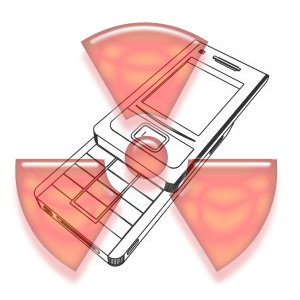Should Africa worry about mobile phone radiation?
The short answer appears to be “no”, although there will be uncertainty for some time.
Triple-digit growth rates are routine across the continent. The widespread availability of mobile phones means that the mobile web can reach tens of millions more than the wired web.” – Jon von Tetzchner, co-founder of Opera, the world’s most popular mobile phone internet browser. (Source: Africa’s Social Media Revolution)
Mobile Internet is poised to improve the health conditions of everyone it touches. Rural areas can now receive instantaneous professional consultation from miles away. The public has a new medium for learning about healthy practices. However, technological advancements come with potentially negative consequences (ie. environmental, physical, etc). With some care and due diligence, we can use history to mitigate the negative physical effects of progress in Africa. In fact, sustainable projects offer Africa a prime opportunity to leapfrog the rest of the world and avoid mistakes (of course this will take government and private cooperation).
However, there are a few areas where Africa cannot learn from other areas’ mistakes. One of those of growing concern is mobile phone radiation. Depending on the source and definition, 30–40% of the population are mobile phone users, ranging from more than 90% in South Africa to less than 5% in Zimbabwe (Futures of Technology in Africa, 40). Globally, there are well over 1 billion mobile users.
The risk:
Basically, mobile phones emit radio waves which are in turn absorbed by body tissues. Since cell phones are a recently new phenomenon (less than 20 years or so), it will take time before conclusive results can be gleaned from change-over-time studies. The US National Cancer Institute sums it up nicely by saying:
Studies suggest that the amount of RF energy produced by cell phones is too low to cause significant tissue heating or an increase in body temperature. However, more research is needed to determine what effects, if any, low-level non-ionizing RF energy has on the body and whether it poses a health danger.”
In an attempt to proactively address the issue of mobile device radiation, every cell phone sold in certain markets, notably North America and Europe, receives SAR (specific absorption rate) testing. The test determines how much radiation is likely absorbed by a human body. In fact, the FCC maintains a list of SAR ratings for all manufacturers. Currently, maximum levels of 1.6 W/kg in 1g of tissue are allowed in the United States, and 2.0 W/kg in 10g of tissue are the limit in Europe. These laws have been in place for years, and may or not be adequate, but at least they are a starting point.
No limits set for Africa…yet:
Due to the necessary collaboration among scientists, government officials, and network operators, it is unlikely that African governments will adopt maximum permitted radiation levels. However, considering African phone models are often similar to those sold in other global markets, Africa may not need its own enforcement. It can simply rely on the general European standard. Even older model phones that make their way to Africa have still been produced after the SAR levels were in place and should be considered safe. However, phones output substantially more power when they are attempting to locate a signal or are in a weak signal area.
Currently, Africans should be confident that they will face fewer health risks than the American or European mobile user. Why?
- Voice calls demand greater power output and therefore produce higher levels of radiation. At the moment, due to network limitations and the cost of access, Africans tend to favor text instead of voice. Moreover, texting and mobile Internet use prevent the phone’s antenna from staying near the brain for extended periods of time as during voice calls. Cells in the hand are much less susceptible to cancer than brain cells.
- Generally, Africans have been using mobile phones for less time than America or Europe. Presumably, negative effects of long-term mobile use will manifest themselves in non-Africans first. However, Africa will have to diligently monitor long-term health issues that may arise in other parts of the world.
The relative lack of regulation and potential variation of radiation levels by network should be of concern to Africa. Perhaps more worrisome than the devices themselves are the broadcast antennas. Over the course of time, people living near cell towers could absorb substantial amount of electromagnetic energy. Of course, such antennas have been broadcasting TV and FM signals for years without apparent effect on local communities. Still, the more widespread nature of cell towers (and potential environmental effects) is something to monitor.













 Twitter
Twitter Facebook
Facebook Pinterest
Pinterest